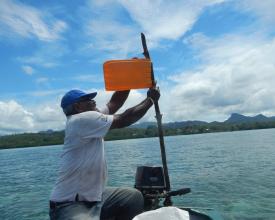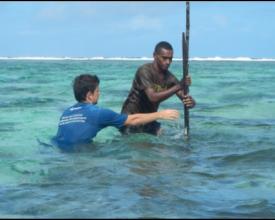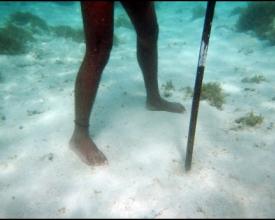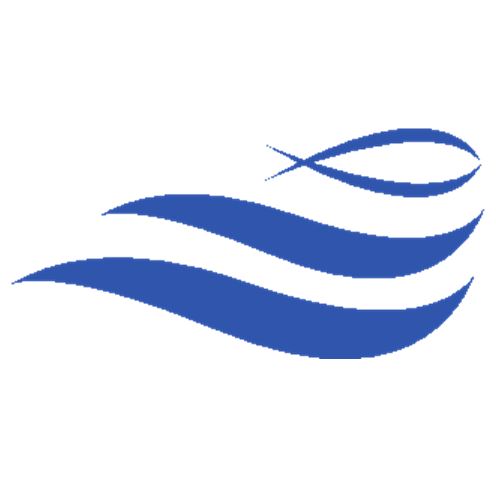
Marking a No-take Area in the Community of Navakavu
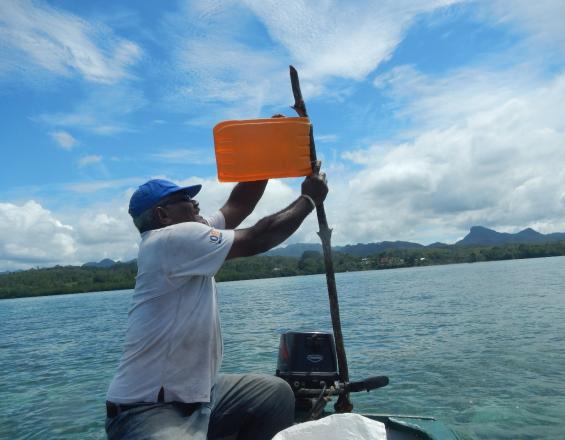
In March 2016, community members of Navakavu, with the help of the MACBIO team, set out to mark the boundaries of the their Tabu (no-take zone), situated in front of the 4 villages that make up the Yavusa Navakavu. Making use of the available surrounding resources, an appropriate number of mangrove sticks of approximately 2 meters length were used as pegs to mark the site. Using a crowbar, holes were dug into sandy substrates and the collected mangroves sticks were forced into the sand during low tide.
Impacts
This measure was taken by the committee for three main reasons. The expected outcomes for this approach to the community is to: i.) provide a clear boundary on where fishermen are not permitted to fish or glean, ii.) easily identify poachers fishing in the Tabu, and iii.) serve as a reminder for the people on the purpose of having a Tabu and why one was established in the first place. To ensure the pegs could be visible from afar, different markers/flags made from washed up debris was attached to the top of the sticks, i.e. plastic containers, flour sacks and reflector vests. These were all material found along the shore near the villages. Alternative markers could also be used in other communities depending on what is deemed suitable and what resources are available. The pegs are still visible 6 month later, will likely be so much longer and are considered by some of the village fish wardens a success in fulfilling its main purposes: Fishermen are better aware of the designated no-take area and poachers can be spotted more easily when fishing in it. The biggest advantage is that this method is easy to set up, easily replicable and very affordable to any village that wishes to mark their Tabu for similar reasons.

